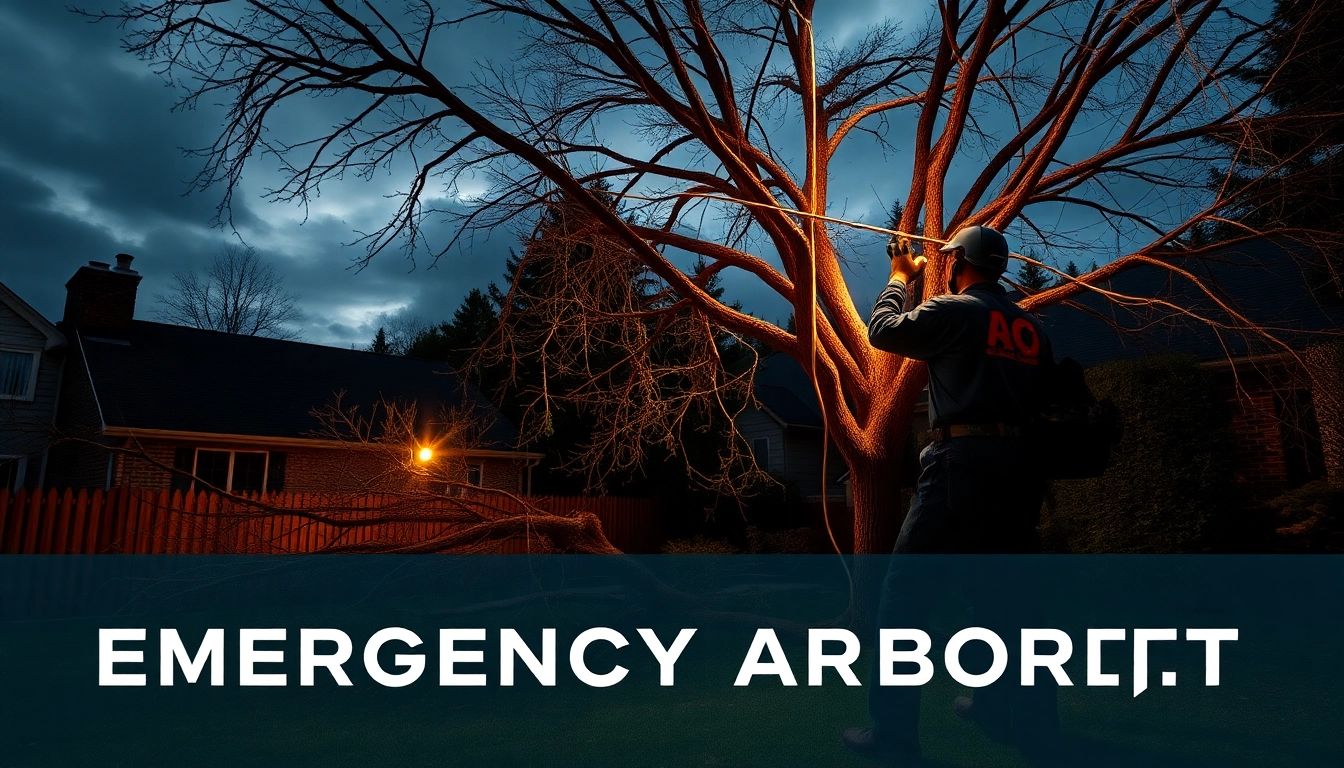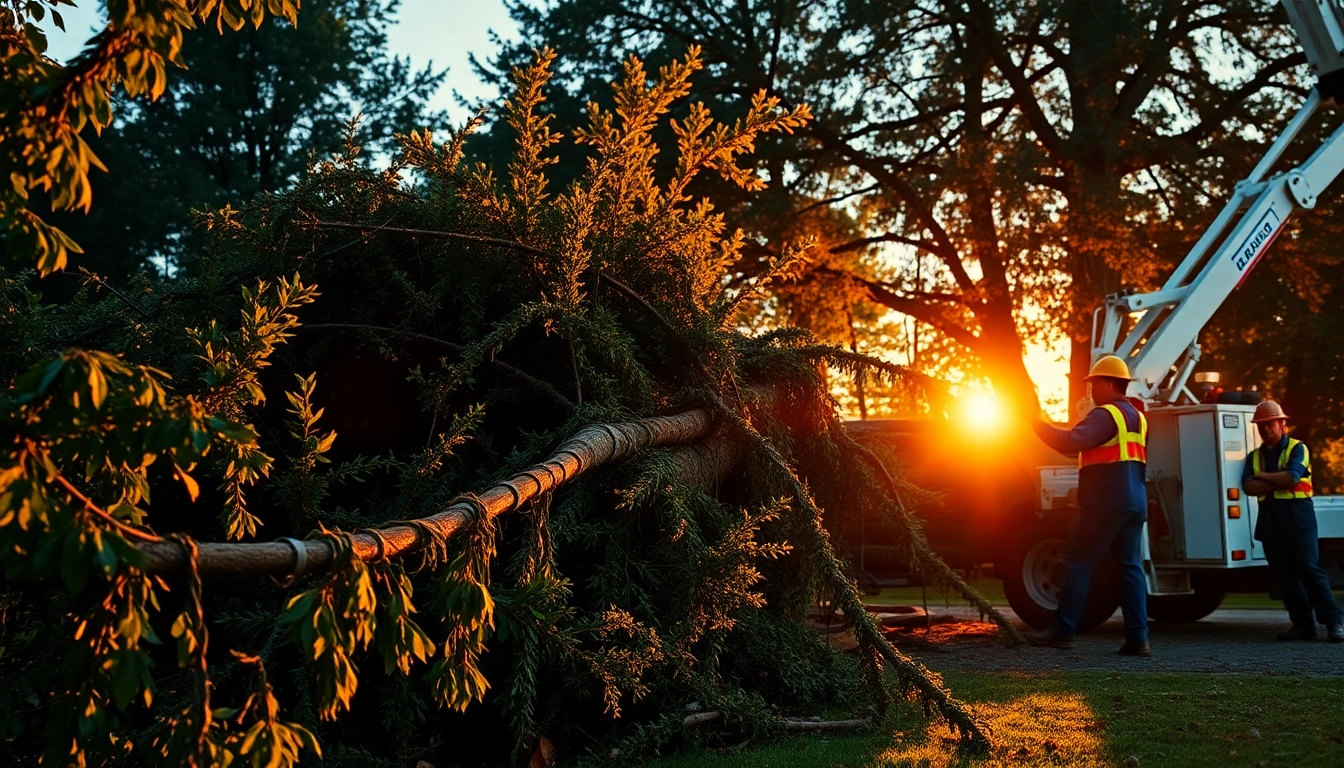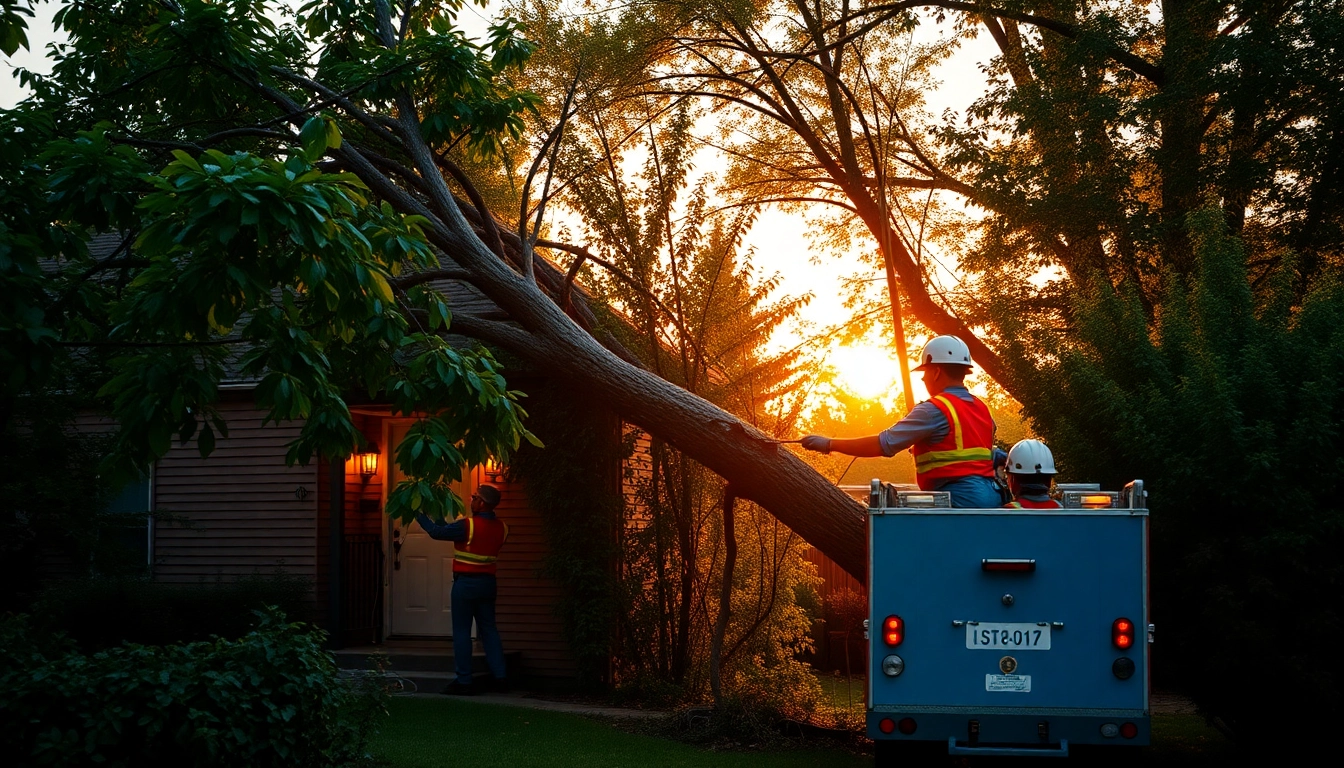
Understanding Emergency Tree Service
Emergency tree service is a critical part of maintaining safe, aesthetically pleasing landscapes. When an urgent situation arises, such as a storm causing damage to trees or hazardous conditions created by fallen limbs, knowing how to respond swiftly is essential. In this guide, we delve deep into the world of emergency tree services, exploring what they entail, common scenarios that necessitate them, and how to assess whether you need their expertise. By understanding these aspects, you’ll be better equipped to handle tree-related emergencies in a timely and effective manner. For swift assistance in such emergencies, consider an emergency tree service that operates 24/7.
What Is Emergency Tree Service?
Emergency tree service refers to professional assistance provided during and after incidents that endanger people, property, or the environment due to tree-related issues. It often involves the removal of fallen or dangerously leaning trees, trimming hazardous branches, and clearing debris that may obstruct roads or pose risks to safety. These services can be urgently required due to severe weather events such as storms, heavy winds, or unexpected natural occurrences, leading to hazardous conditions.
Common Scenarios Requiring Emergency Tree Service
Several situations might trigger the need for emergency tree services:
- Storm Damage: High winds and heavy rains can cause trees to fall, posing significant risks to homes and vehicles.
- Structural Damage: If branches threaten to fall on power lines, homes, or other structures, immediate professional intervention is necessary to prevent accidents.
- Health Hazards: Trees infested by disease or pests may lose limbs or collapse, making it imperative to remove or treat affected trees swiftly.
- Earth Movement: Landslides or erosion can destabilize trees, necessitating expert removal to avoid future hazards.
How to Assess the Need for Emergency Tree Service
Assessing the situation is crucial in determining the urgency of calling an emergency tree service. Consider the following:
- Examine the damage: Look for fallen trees or branches on structures, power lines, or vehicles.
- Identify hazards: Are there leaning trees that could fall or branches that are precariously hung?
- Evaluate accessibility: Can emergency vehicle access be easily established?
- Seek professional opinion: When in doubt, contacting a certified arborist can provide clarity on the best course of action.
How to Choose the Right Emergency Tree Service Provider
Selecting the appropriate emergency tree service provider is pivotal in ensuring a quick, efficient resolution to tree-related emergencies. Here are considerations to help you make the best decision:
What to Look for in a Tree Service
Look for the following attributes when selecting an emergency tree service:
- Availability: A reliable service should be available 24/7, especially during peak emergencies.
- Expertise: Evaluate the company’s experience and ensure they have qualified arborists capable of handling emergencies.
- Insurance: Verify that the service provider is insured to protect against liability in case of accidental damages.
- Reputation: Research local reviews and ask for referrals to gauge customer satisfaction.
Comparing Costs of Emergency Tree Services
The cost of emergency tree services can vary based on numerous factors, including the complexity of the job, the size of the tree, and accessibility. Here’s how to navigate costs:
- Request quotes from multiple providers to understand average pricing.
- Inquire about additional charges that may arise due to urgent responses or after-hours service.
- Understand the scope of service included in the quote—are debris cleanup and equipment fees covered?
Checking Credentials and Reviews
Before making your choice, ensure the provider holds proper certifications and licenses. Also, examine their online presence and reviews on platforms like Yelp, Google Reviews, or the Better Business Bureau. A reliable tree service will have positive feedback that reflects excellent customer service and quality of work.
Steps to Take After a Tree Emergency
After experiencing a tree emergency, it’s crucial to follow steps that ensure safety and proper handling of the situation:
Immediate Actions for Safety
Always prioritize safety. Here’s what to do:
- Evacuate the area and keep your distance from downed power lines and unstable trees.
- Inform neighbors or anyone nearby about potential hazards.
- Avoid attempting to remove trees or branches on your own, as this can lead to injuries.
Contacting Emergency Tree Services
Once safety is ensured, contact an emergency tree service provider immediately. Provide detailed information about the location, type of emergency, and any hazards present. This enables the service to prepare adequately before dispatch.
Insurance Considerations for Tree Removal
After managing immediate safety concerns, check relevant insurance policies. Homeowners’ insurance may cover costs associated with tree removal or damage, especially if the tree fell due to a storm. Contact the insurance company to understand your coverage and initiate a claim process efficiently.
Benefits of Professional Emergency Tree Service
Choosing professional emergency tree services comes with numerous advantages:
Expertise and Safety in Tree Removal
Professional arborists possess specialized training and equipment to tackle dangerous tree situations safely. This expertise reduces the risk of accidents during tree removal and ensures compliance with local regulations.
Preserving Your Property’s Landscape
Trained professionals employ techniques that focus on preserving the surrounding landscape. This can include selective pruning or detailed assessments before removal to prevent collateral damage.
Access to Specialized Equipment
Emergency tree services come equipped with tools and machinery specifically designed to handle tree emergencies efficiently. This professional-grade equipment minimizes risks and speeds up the removal process compared to DIY methods.
Preparing for Future Tree Emergencies
Proactively preparing for potential tree emergencies can save time, money, and stress. Here are crucial steps to consider:
Regular Tree Maintenance to Prevent Emergencies
Schedule regular inspections and maintenance of your trees to identify potential hazards early. Routine pruning can help maintain tree health while reducing the risk of limbs falling during storms or high winds.
Creating a Tree Risk Assessment Plan
A comprehensive risk assessment plan should include details on removing problematic trees, procedures for emergency response, and key contacts for tree service professionals. Having a clear plan in place helps in reacting promptly when emergencies arise.
Emergency Contacts for Tree Service
Keep a list of reliable emergency tree service providers at hand, including their contact numbers and a brief overview of services. In times of urgency, faster access to this information can significantly speed up response times.





